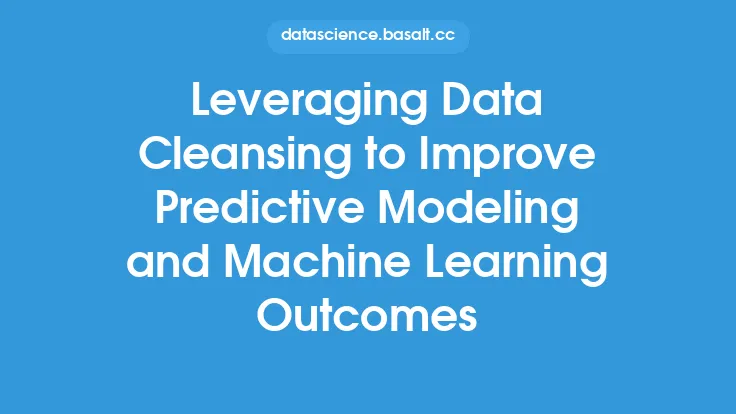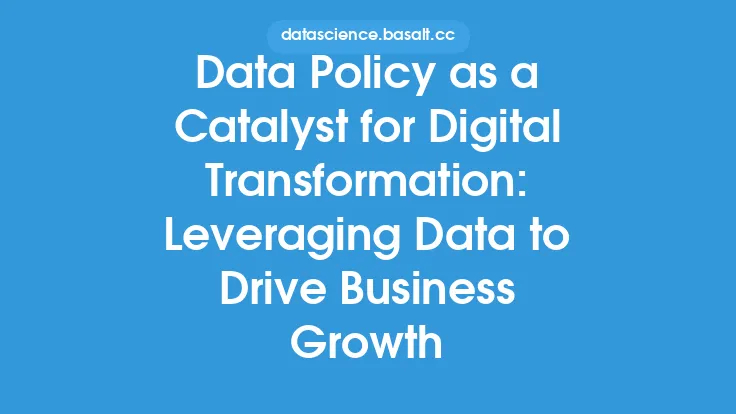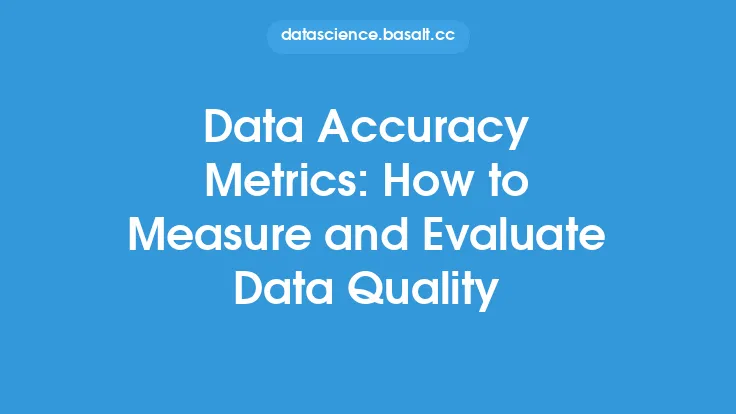In today's data-driven world, organizations rely heavily on accurate and efficient data to inform their business decisions, drive innovation, and stay competitive. However, ensuring data accuracy and efficiency can be a daunting task, especially when dealing with large volumes of data from diverse sources. This is where technology comes into play, offering a range of solutions to enhance data accuracy and efficiency. By leveraging technology, organizations can streamline their data management processes, reduce errors, and gain valuable insights from their data.
Introduction to Data Accuracy and Efficiency
Data accuracy refers to the degree to which data reflects the true values or facts it is intended to represent. Data efficiency, on the other hand, refers to the ability to process and analyze data quickly and effectively. Achieving high data accuracy and efficiency is crucial for organizations, as it enables them to make informed decisions, optimize operations, and improve customer satisfaction. Technology plays a vital role in enhancing data accuracy and efficiency by providing tools and techniques to automate data processing, detect errors, and improve data quality.
Role of Automation in Data Accuracy and Efficiency
Automation is a key technology that can significantly enhance data accuracy and efficiency. By automating data processing tasks, organizations can reduce the risk of human error, increase processing speed, and improve data consistency. Automated data validation and verification techniques can detect errors and inconsistencies in data, ensuring that only accurate data is used for analysis and decision-making. Additionally, automation can help streamline data workflows, reducing manual data entry and processing time, and enabling organizations to focus on higher-value tasks.
Data Validation and Verification Techniques
Data validation and verification are critical techniques used to ensure data accuracy. Data validation involves checking data against predefined rules and constraints to ensure it meets specific criteria. Data verification, on the other hand, involves checking data against external sources to ensure its accuracy and completeness. Technology provides a range of data validation and verification techniques, including data profiling, data quality metrics, and data certification. These techniques can be used to identify errors, inconsistencies, and inaccuracies in data, enabling organizations to take corrective action and improve data quality.
Data Quality Metrics and Monitoring
Data quality metrics and monitoring are essential for ensuring data accuracy and efficiency. Data quality metrics provide a way to measure and evaluate data quality, enabling organizations to identify areas for improvement. Common data quality metrics include data completeness, data consistency, data accuracy, and data timeliness. Technology provides a range of tools and techniques for monitoring data quality, including data quality dashboards, data quality scorecards, and data quality alerts. These tools enable organizations to track data quality in real-time, identify issues, and take corrective action to improve data accuracy and efficiency.
Advanced Technologies for Data Accuracy and Efficiency
Advanced technologies, such as artificial intelligence (AI), machine learning (ML), and natural language processing (NLP), can significantly enhance data accuracy and efficiency. AI and ML can be used to automate data processing tasks, detect errors and inconsistencies, and improve data quality. NLP can be used to extract insights from unstructured data, such as text and speech, and improve data accuracy. Additionally, technologies like blockchain and cloud computing can provide a secure and scalable infrastructure for data management, enabling organizations to store, process, and analyze large volumes of data efficiently and accurately.
Best Practices for Implementing Technology for Data Accuracy and Efficiency
Implementing technology to enhance data accuracy and efficiency requires careful planning and execution. Best practices include defining clear data quality goals and objectives, selecting the right technology solutions, and providing training and support to users. Additionally, organizations should establish data governance policies and procedures to ensure data quality and security. Regular monitoring and evaluation of data quality metrics are also essential to ensure that technology solutions are effective and efficient.
Conclusion
In conclusion, technology plays a vital role in enhancing data accuracy and efficiency. By leveraging automation, data validation and verification techniques, data quality metrics and monitoring, and advanced technologies, organizations can streamline their data management processes, reduce errors, and gain valuable insights from their data. By following best practices and implementing technology solutions effectively, organizations can improve data accuracy and efficiency, enabling them to make informed decisions, optimize operations, and improve customer satisfaction. As data continues to play an increasingly important role in business decision-making, the importance of leveraging technology to enhance data accuracy and efficiency will only continue to grow.





